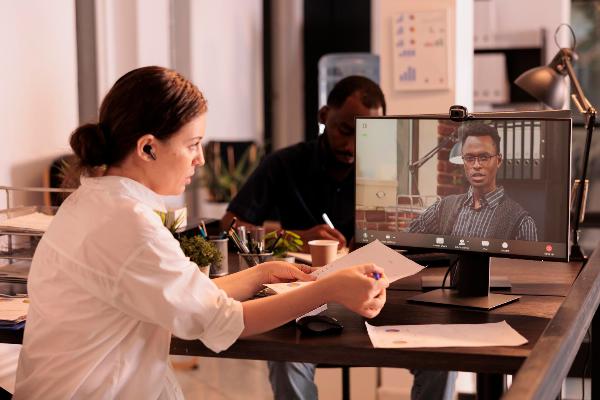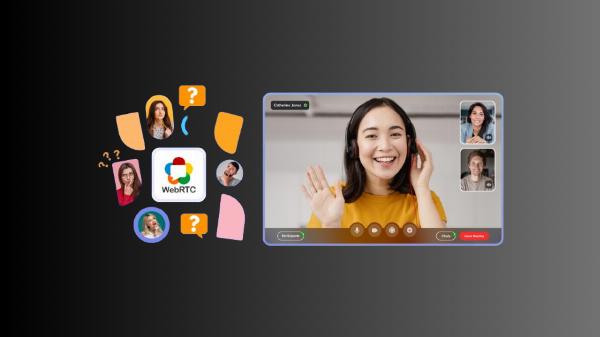WebRTC Development Solutions: Innovations Beyond Video Calls and Chat

Strong 8k brings an ultra-HD IPTV experience to your living room and your pocket.
Web Real-Time Communication (WebRTC) is revolutionizing the way we connect and interact online. While most commonly associated with video calls and chat, WebRTC's capabilities extend far beyond these applications. This article delves into the innovative solutions powered by WebRTC, showcasing its potential in various sectors.
Introduction to WebRTC
WebRTC is an open-source project that enables real-time communication through simple APIs. It facilitates peer-to-peer (P2P) audio, video, and data sharing directly between browsers and devices, eliminating the need for plugins or external applications. Its versatility and ease of integration have made WebRTC a cornerstone of modern communication platforms.
Beyond Video Calls and Chat
1. Real-Time Data Sharing
One of the most powerful yet underutilized features of WebRTC is its data channel, which allows for real-time data exchange between peers. This capability can be harnessed for various applications, including:
File Sharing: Instant and secure file transfer between users.
- Gaming: Real-time multiplayer gaming with low latency.
- Collaboration Tools: Synchronized document editing and whiteboarding sessions.
2. IoT Integration
WebRTC can be integrated with Internet of Things (IoT) devices to enable real-time monitoring and control. For example:
- Smart Home Systems: Live video feeds from security cameras, real-time data from sensors, and instant control of smart devices.
- Healthcare: Remote patient monitoring with live video consultations and real-time data from medical devices.
3. Telepresence and Augmented Reality (AR)
WebRTC enhances telepresence solutions, allowing users to feel present in a remote location. Coupled with AR, it provides immersive experiences:
- Virtual Meetings: Combining video calls with AR elements for interactive presentations and product demonstrations.
- Remote Assistance: Experts can guide users through complex tasks in real-time using AR overlays.
4. Customer Support and Sales
Businesses leverage WebRTC to offer enhanced customer support and sales experiences:
- Video Customer Support: Real-time video support sessions for troubleshooting and assistance.
- Virtual Showrooms: Interactive product demonstrations and consultations with sales representatives.
5. Real-Time Collaboration Platforms
WebRTC powers advanced collaboration platforms that facilitate seamless teamwork:
- Project Management Tools: Real-time updates, video conferencing, and instant messaging integrated into project management software.
- Educational Platforms: Virtual classrooms with live video lectures, real-time quizzes, and collaborative projects.
Also Read: 5 Facts You Should Know About WebRTC Mobile App Development
Technical Innovations in WebRTC
Enhanced Security
WebRTC prioritizes security with end-to-end encryption for all communications. Recent advancements include:
- DTLS-SRTP: A protocol combination ensuring encrypted audio and video streams.
- Identity Verification: Mechanisms to authenticate participants and prevent unauthorized access.
Improved Scalability
Scalability is crucial for handling large numbers of users. Innovations in WebRTC include:
- SFU (Selective Forwarding Unit): A server that forwards media streams to multiple recipients, optimizing bandwidth usage.
- MCU (Multipoint Control Unit): A server that mixes media streams for group calls, providing a single stream to each participant.
Better Quality of Service (QoS)
Ensuring high-quality communication is essential. WebRTC improvements focus on:
- Adaptive Bitrate: Dynamically adjusting the video quality based on network conditions.
- Network Optimization: Techniques like packet loss concealment and jitter buffering to maintain smooth communication.
Case Studies
1. Telehealth Platforms
Telehealth has seen significant growth, with WebRTC enabling secure and reliable video consultations. Platforms like Doxy.me and Amwell utilize WebRTC for HIPAA-compliant video calls, ensuring patient privacy and data security.
2. Online Education
Educational platforms such as Coursera and edX incorporate WebRTC to provide interactive live sessions and collaborative learning environments. Features like breakout rooms and live polls enhance student engagement.
3. Virtual Events
The pandemic accelerated the adoption of virtual events. Platforms like Hopin and Airmeet use WebRTC to offer seamless live streaming, interactive sessions, and networking opportunities.
Future Trends in WebRTC
AI and Machine Learning Integration
The integration of AI and ML with WebRTC is set to revolutionize real-time communication:
- Voice and Video Analysis: Real-time transcription, sentiment analysis, and emotion detection.
- Automated Moderation: AI-driven tools to monitor and moderate live sessions, ensuring compliance and safety.
Enhanced Mobility
As 5G networks roll out globally, WebRTC will benefit from improved connectivity and reduced latency, enabling more robust mobile experiences.
Cross-Platform Compatibility
WebRTC continues to enhance cross-platform compatibility, ensuring seamless communication across various devices and operating systems.
Also Read: Why is Master Software Solutions the Best WebRTC Development Company?
Conclusion
WebRTC Development Solutions is much more than a tool for video calls and chat. Its versatile capabilities and continuous innovations are transforming industries and enabling new possibilities. From real-time data sharing and IoT integration to telepresence and AI-driven solutions, WebRTC is at the forefront of the next generation of communication technologies. As the landscape evolves, staying informed about these developments will be crucial for businesses and developers looking to leverage WebRTC for innovative solutions.
Note: IndiBlogHub features both user-submitted and editorial content. We do not verify third-party contributions. Read our Disclaimer and Privacy Policyfor details.




